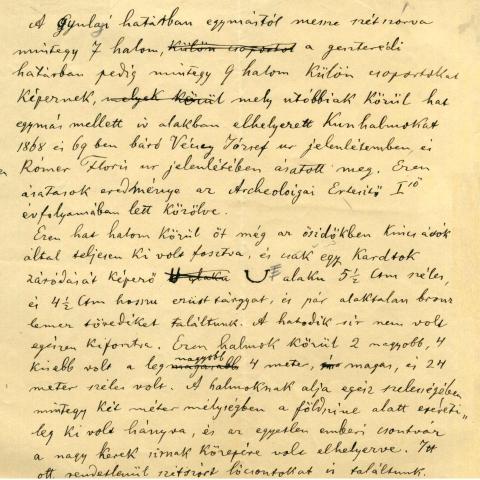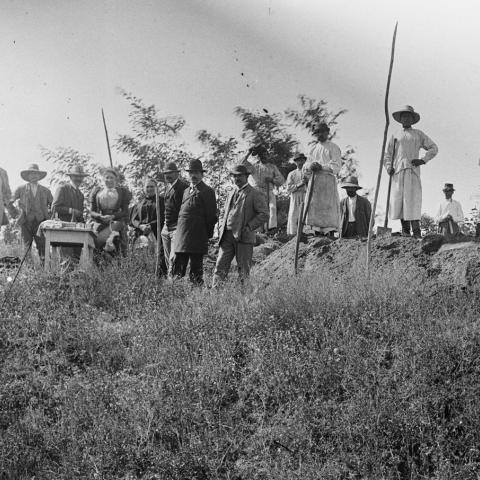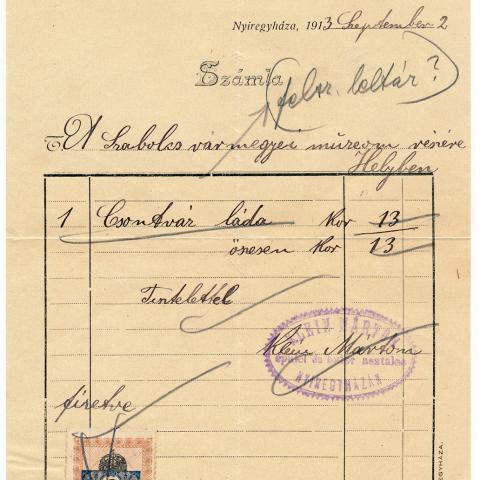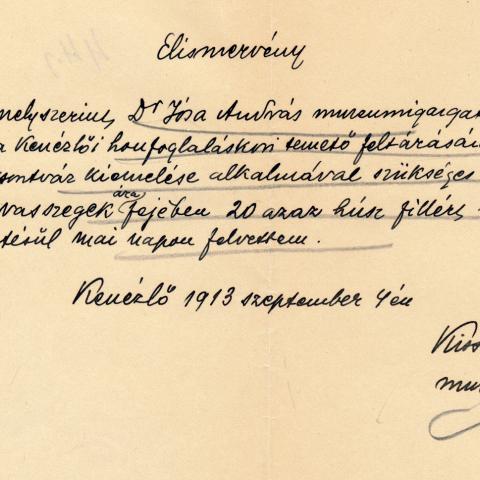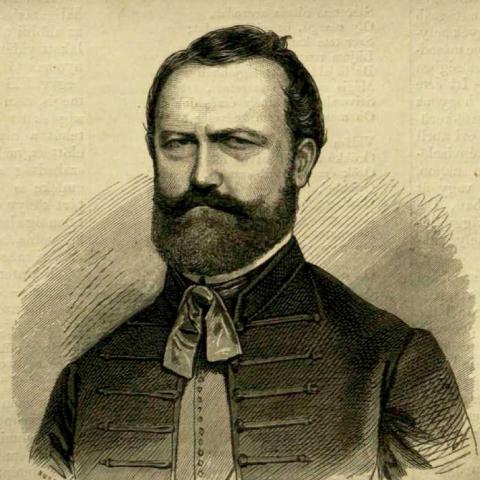“Our County Museum of Antiquities is a constantly evolving and enriching cultural institution. Those stone axes, bronze and iron swords, spurs, urns and armours along with other objects all came to surface from the ground of Szabolcs County. They are all the testimony of our ancient history and all gathered together, as a collection – should form a cultural institution. The museum objects, based on the weight and value of their material, might not be appreciated by the unrefined, uncultivated contemporary people, but there will come better times when the members of the future generations will take a revered look at the testimony of the prehistoric times, will understand their historic value and will treat them as sources revealing the past”.
JÓSA 1899.
The Jósa András Museum, whose predecessor was the Archaeological Society of Szabolcs County founded more than 150 years ago, owes its existence to an excavation.
András Jósa recalls the story as follows:
“Back in 1868 I happened to have a conversation once with Mr B.V. about archaeology, in which science I still remained a dilettante who is interested in the testimonies of the past… During our conversation I accidentally mentioned that in our countryside numerous mounds are found called as “kun mounds”, which are not geological formats but rather seem to be artificial. In our neighbourhood, in a settlement called Geszetrég there are (five) 6 mounds next to each other which are called “Kun mounds” by the local people. During the reign of king St. Ladislaus there was a battle between the Hungarians and the Cumanians in the area between Bököny and Geszteréd, and most probably the mounds cover the bones of those who died in the battle. Since it is quite unlikely that our ancestors were buried together with their enemies in the same grave, we may hope that these mounds will reveal the osseous type of the Hungarians. Well, in the end, we excavated those mounds on the expense of baron József Vécsey… Three days after starting the diggings, Mr Rómer Flóris also arrived at the site. Noone had ever thought of founding an Archaeological Society till then. But this excavation gave an impetus to establishing the society.”
From this time onwards András Jósa started to systematically collect the archaeological treasures of Szabolcs County. The special value of the collection consisted in the fact that – as Jósa stated – “it came entirely from the Nyírség area and its immediate neighbourhood – from a territory approximately of 6000 square kilometers large, this securing special value to it.” If a change occurred and he happened to have some spare time he used to interrogate the soil with his spade. In the year 1867 or 1868 he is again performing field excavations accompanied by baron József Vécsey and Flóris Rómer in the area of Hugyaj where they found eight burial grounds dating to the period of the Hungarian Conquest. They themselves opened up the graves with feather-knives.
The same Triassic – Baron József Vécsey, Flóris Rómer and András Jósa in 1870 petrformed further archaeological excavations in Kisvárda-Darusziget revealing 8 graves dating from the Copper Age. Jósa carried out further researches in Gáva on a place named Katóhalom; then in Tiszabezdéd along with chief town clerk László Vidovich and deputy town clerk János Somlyódy in a cemetery belonging to the age of the Hungarian Conquest. In 1907 Jósa was looking for Bronze-Age graves in Egyek. In 1908, in the company of János Hideg and András Kállay, he performed diggings revealing testimony of the Age of the Hungarian Conquest, on which occasion he registered 39 graves. Five skulls were even removed from graves and taken away for further examinations. In 1909 diggings were carried out in Telekdomb in the company of András Kállay. Along with Lajos Kiss and András Kállay he revealed graves belonging to the Age of the Hungarian Conquest in Kenézlő in a place called Telekdomb in year 1913.
It was not by chance that in 1895 the Minister of Commerce commissioned András Jósa to carry out the diggings of the Szabolcs earthwork.
By 1895 Jósa had acquired great experience in archaeological research. Together with Gyula Bartos, a historian, he strove to know as much as possible about the fortress of the army commander called Szabolcs. After synthesizing the archaeological finds and historical sources he stated that “Anonymus did not lie, but used one word wrongly: instead of “aedificavit” had it built he should have used “restauravit” or “fortificavit” “restored” or “fortified”. This exemplifies that in his research he used a method which today we would call complex method involving linguistic analysis as well. He was also interested in finding out the origin of certain place names in the area of Szabolcs and also about the language these names may have come from.
In this period, in his position of the museum guard, he did his best to acquaint the citizens of Szabolcs County with the past and the testimony of the past. He even had the model of the earthwork built from clay and loess, based on the drawings of Josef Munzhardt, a royal engineer. Unfortunately this model was dropped by the workers and broke into pieces on the occasion of the millennial exhibition. This is how the glory of the world passes…
In András Jósa’s time an excavation looked quite different than it does today. Today hectares of humus are removed from the surface with machines, by which process the upper surface of the soil is removed so that the outlines of the formers constructions should be visible. In Jósa’s time trenches were dug. The soil was removed by manpower, in barrows if the soil was in the way. Today drone pictures are taken of the site and the exact geographical coordinates are determined with instruments. In Jósa’s time taking photographs was a rarity: the glass negatives of the pictures taken by Jósa are among the much cherished items of the museum.
However, we should not underestimate the innovators of the heroic age of archaeology. It is not a mere coincidence that the founder of the museum, as a doctor, was interested in the “osseous type of the Hungarian people”, he made drawings of the graves, although these drawings were not as accurate and proportionate as we do them today. And once he drew the graves he also produced the first maps of the graveyards dating back to the period of the Hungarian Conquest. These were the first maps of graveyards in the history of the Hungarian archaeological research paving the way for the great researchers half a century later, for Gyula László for example, who, based on the analysis of these maps wrote one of the greatest reading experiences of each of us: The Life of the Hungarian People in the Time of the Hungarian Conquest.
